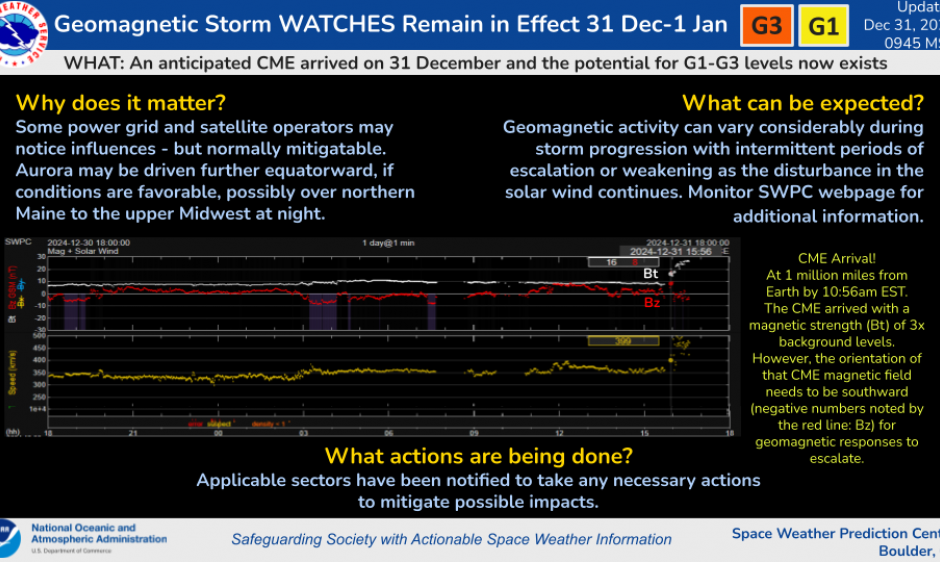
The anticipated CME that launched from the Sun on 29 Dec has arrived! SWPC forecast timing was very good as the shock arrival at the leading edge of the coronal mass ejection (CME) arrived at our solar wind observatory - NOAA DSCOVR and NASA ACE by 10:56am EST and reached Earth shortly afterwards. The shock is just leading edge of the CME. As CME progression continues, the main magnetic “cloud” embedded within the CME should arrive and we anticipate G1-G3 potential to continue into the evening and early night hours across the U.S. The orientation of that magnetic field is very important and needs to be southward directed (opposite Earth's magnetic field) for geomagnetic responses to escalate. Unfortunately, we have no way of predicting what that orientation will be, other than monitoring the solar wind observatories a million miles from Earth. Those observations are critical to issuing subsequent warnings. Continue to stay properly informed with the latest information and updates on our webpage.